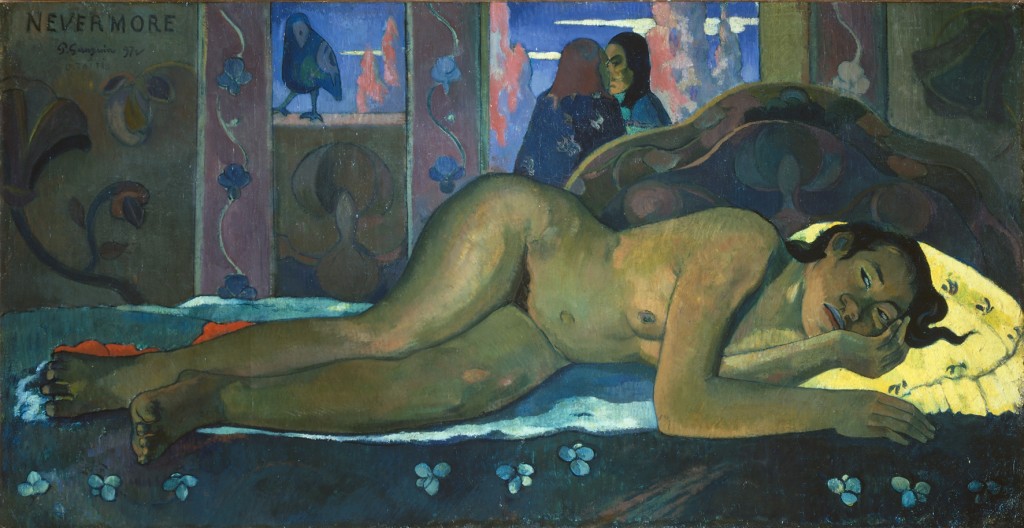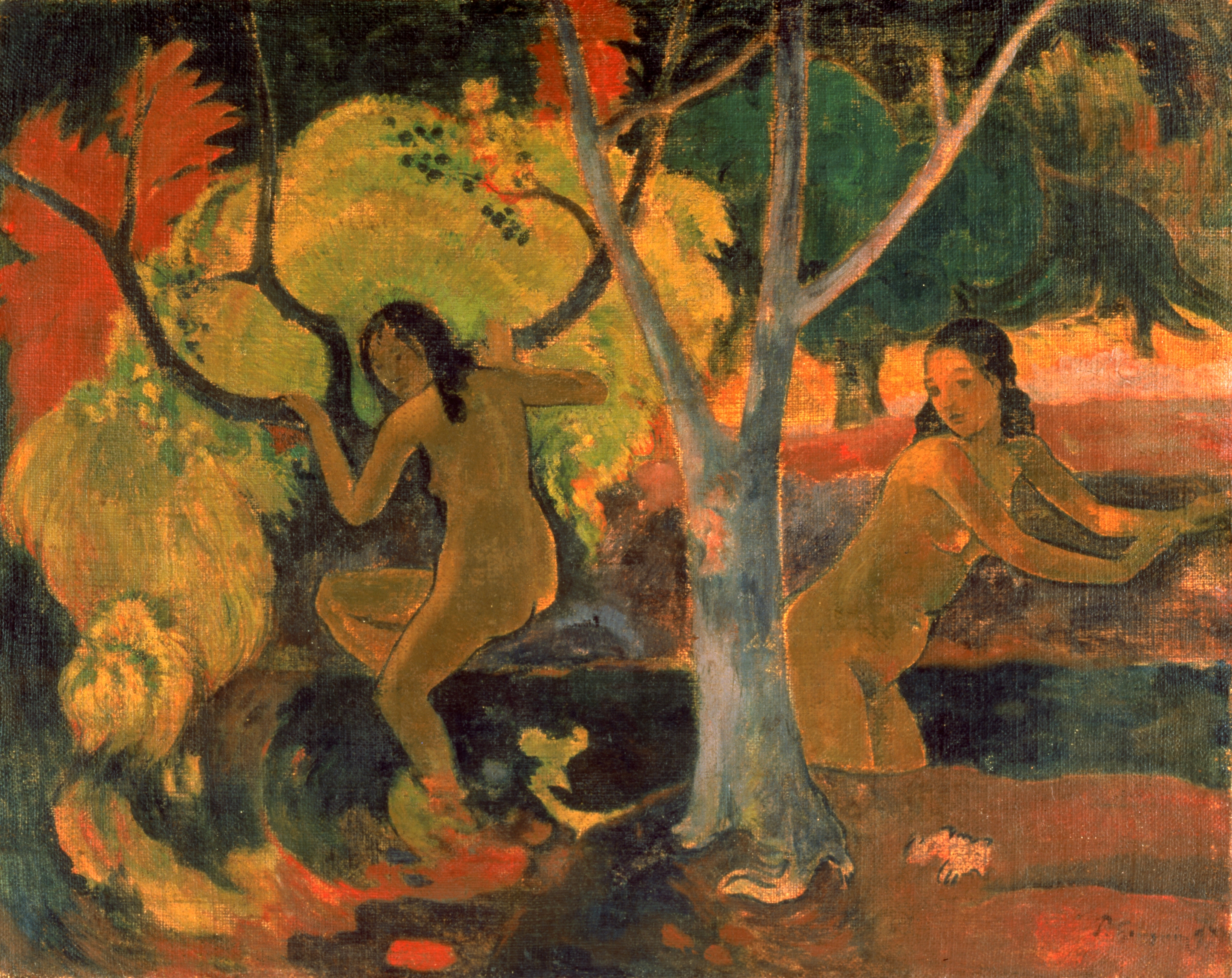Collecting Gauguin, Samuel Courtauld in the ’20s
Minute in size, it was refreshing to visit a small gallery and be presented with such a select number of an artist’s work. The majority of the exhibition consists of Paul Gauguin paintings acquired by The Courtauld, as well as those on loan from other galleries, such as The Barber Institute in Birmingham.
I was intrigued by the exhibition’s inclusion of a poster featuring one of Gauguin’s paintings of a Tahiti woman, from the first Post-Impressionist exhibition, which was put together by Roger Fry. The poster helps to locate Gauguin in the context of other startling artists and their new radical wave of artistic expression. It singles out Gauguin from amongst the group of artists he was exhibited with, or at least indicates Fry’s admiration of Gauguin in choosing his work as the poster image. Gauguin is renowned for fleeing Paris to go to Tahiti and focussing on subjects outside of the European sphere, where the rest of his Post-Impressionist contemporaries were located. There is a sense that The Courtauld is aiming to revive Gauguin’s subversive qualities and create an experience of discovery in the exhibition (discovery being an fitting theme to Gauguin’s subjects and forms). Though The Courtauld might not have always been thought of as pushing boundaries, this exhibition like its predecessor Becoming Picasso, could be seen as an attempt to resurface and reanalyse an artist in the ‘traditional’ artistic canon.
The intensely turquoise blue exhibition walls, although being on the verge of distracting, showed off the vibrant paintings with connotations of the outdoors and the sea, both important to Gauguin’s work and his obsession with the island of Tahiti. He felt it allowed him to escape a Western frame by indulging in its exotic pleasures and ‘otherness’.
However, the exhibition is also careful to indicate a darkness and unease within Gauguin’s initially idealised and mythologised depictions of Tahiti and its inhabitants. The women in Bathers at Tahiti (1897) are depicted enjoying the luscious scenery but they glance uncertainly at something in the water beside them. As the viewer, we do not know what it is they look at, which transfers the unease out of the painting to infect the outside world. It also reminds us that we are outsiders to this island and even to Gauguin’s own personal vision of it.
The wood engravings featured in the exhibition were created for Gauguin’s satirical broadsheet Le Sourire, which aimed to denounce the pervasive corruption of the Church and colonial government in Tahiti. The engravings contain a chaotic sense of movement, and dreamlike shapes of beasts or figures that merge into one another, highlighting underlying tensions on the island.

Paul Gauguin,
Nevermore (1897) image courtesy of The Courtauld Gallery, London
Additionally, the painting Nevermore (1897) presents a nude woman reclining on a couch, which at first appears eroticised – or at least alludes to other reclining nudes that have been conveyed erotically – but is actually a sobering portrait of death. It is indebted to Edgar Allan Poe’s poem ‘The Raven’ (1845) with an inscription of ‘Nevermore’ on the top left hand corner of the painting and the presence of the raven looking over the woman. The island is haunted by death and cannot escape the clutches of the blighted human condition. Is Gauguin suggesting the dream world is transitory; a false, idealistic idea of Tahiti?
In this way, although Gauguin is quickly interpreted by many as being celebratory of Tahiti and lavish in displaying its promises of liberation, there are also harsh everyday realities depicted in his work. For example, the prominence of death in Nevermore, might refer to the travellers who brought diseases to the island and whose discoveries and indulgences had tragic consequences. References such as these to darkness, destruction and unease, beneath layers of beauty, freedom and ‘primitivism’ in Gauguin’s work, make Joseph Conrad’s novel The Heart of Darkness a particularly apt comparison for it. This novel explores the darkness at the heart of the primitive and the primitive at the heart of us all, although Conrad’s presentation of the ‘other’ has been condemned as essentially racist in a way that Gauguin is not so firmly accused of.
I was most struck by the single plinth displaying the marble Portrait of Mette Gauguin (1879-80), which is the only signed bust in marble by Gauguin. It shocked me because its features are classical and highly realistic in comparison with the figures in his paintings and because I never knew he might have had such talents in sculpture. However, many art historians have suggested that Gauguin merely created the model for the sculpture and then collaborated with a specialist sculptor who cut the marble.
Overall, this exhibition asks the viewer to see Gauguin and his work in subtly different and new lights. It also provides the opportunity to look in detail at a select number of key – and lesser know – works by this Post-Impressionist artist who we might believe to know so well.
‘Collecting Gauguin: Samuel Courtauld in the ‘20s’ is at The Courtauld Gallery, London until 8 September 2013. The exhibition is free for full-time UK students.

Comments